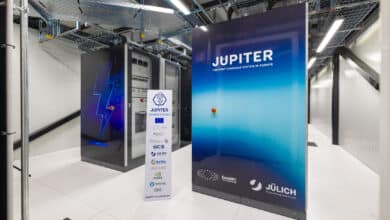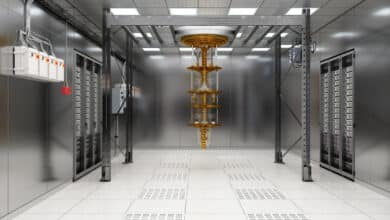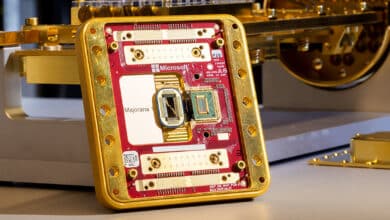China Deploys 100-Qubit Neutral-Atom Quantum Computer

1 Nov 2025 – China has reached a new milestone in quantum computing with the deployment of Hǎnyuán-1, the country’s first room-temperature neutral-atom quantum computer. Announced in late October (link to Google Translate of the original article) in Hubei Province, Hǎnyuán-1 is a 100-qubit system that has now entered commercial use – reportedly with over ¥40 million (~$5.6 million) in orders from customers. One unit has already been delivered to a subsidiary of China Mobile, and another is being exported to Pakistan, marking one of the first international sales of a Chinese quantum computer.
Hǎnyuán-1 employs arrays of “cold” neutral atoms as qubits, manipulated by lasers but operating at room temperature (in contrast to superconducting qubits that need dilution refrigerators). The entire machine fits in only three standard equipment racks and consumes much less power than typical quantum setups – Chinese officials claim it uses about one-tenth the energy of comparable foreign systems. Avoiding cryogenics and leveraging compact lasers make it relatively portable and practical for field deployment.
This project was developed by the Chinese Academy of Sciences’ Innovation Academy for Precision Measurement Science and Technology in Wuhan, with support from Hubei’s provincial “Pioneer” technology program. A key aspect is that all components were produced domestically. Wuhan’s “Optics Valley” cluster provided a local supply chain for high-end lasers, control electronics, and photonics, eliminating the need to import critical parts. This aligns with China’s broader push for technological self-reliance – Hǎnyuán-1 showcases a fully home-grown quantum machine.
According to Chinese media (Hubei Daily), Hǎnyuán-1 has achieved a reliability level on par with international standards for 100-qubit devices. It’s already capable of tackling non-trivial problems in areas like financial modeling, logistics optimization, and new materials research, officials said. Those are application areas where quantum computers, even noisy ones, can potentially show advantages via complex sampling or optimization tasks. Having a 100-qubit platform in real users’ hands (like a telecom company) means China is not just doing lab experiments but integrating quantum computing into industry workflows.
This launch comes hot on the heels of another Chinese quantum milestone: in late October, China opened up access to a 105-qubit superconducting quantum computer (the Zuchongzhi 3.0 chip) via a cloud platform. With Zuchongzhi 3.0, China demonstrated quantum advantage in random circuit sampling and made the system available to external users through the “Tianyan” quantum computing network. Now, Hǎnyuán-1 adds a different technology (neutral atoms) to China’s portfolio, and in a commercial setting.
Together, these developments underscore how rapidly China is advancing on multiple quantum fronts. The country is essentially running two parallel quantum computing tracks: superconducting qubits led by USTC in Hefei, and photonic/atomic systems led by CAS and others in Wuhan and elsewhere. Each has now delivered a 100+ qubit device. By achieving this with domestic suppliers and already lining up buyers, China is also signaling that its quantum industry is moving toward maturity.
Chinese officials touted Hǎnyuán-1 as proof that their quantum efforts are “gaining speed” and reaching practical deploymeny. They’re now planning a dedicated quantum computing center in Wuhan by 2027 and further scale-up. For the rest of the world, it’s a clear message: China intends to be a leader in not just quantum research, but quantum commercialization. And they’re doing so across different quantum technologies, from fridge-cooled superconductors to laser-cooled atoms, with an eye on real-world impact in finance, telecom, and beyond.
Quantum Upside & Quantum Risk - Handled
My company - Applied Quantum - helps governments, enterprises, and investors prepare for both the upside and the risk of quantum technologies. We deliver concise board and investor briefings; demystify quantum computing, sensing, and communications; craft national and corporate strategies to capture advantage; and turn plans into delivery. We help you mitigate the cquantum risk by executing crypto‑inventory, crypto‑agility implementation, PQC migration, and broader defenses against the quantum threat. We run vendor due diligence, proof‑of‑value pilots, standards and policy alignment, workforce training, and procurement support, then oversee implementation across your organization. Contact me if you want help.



